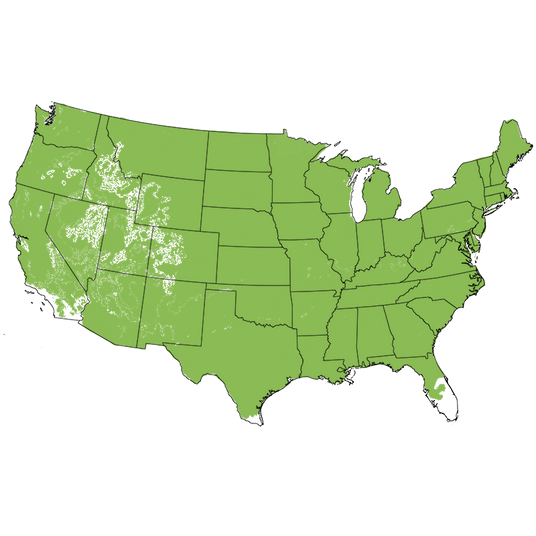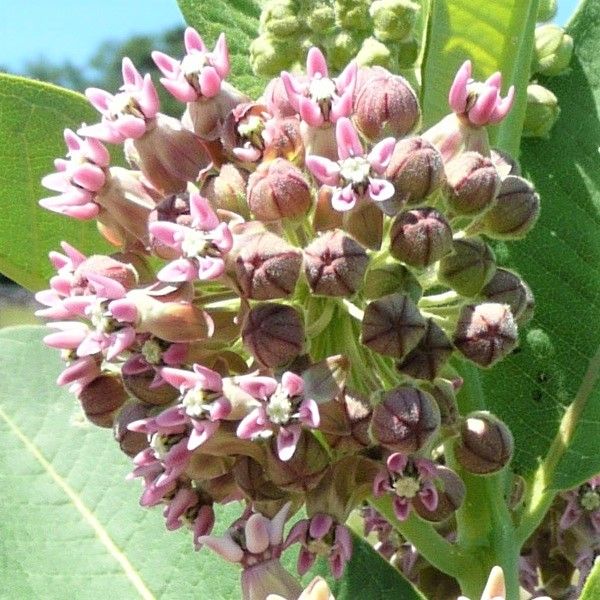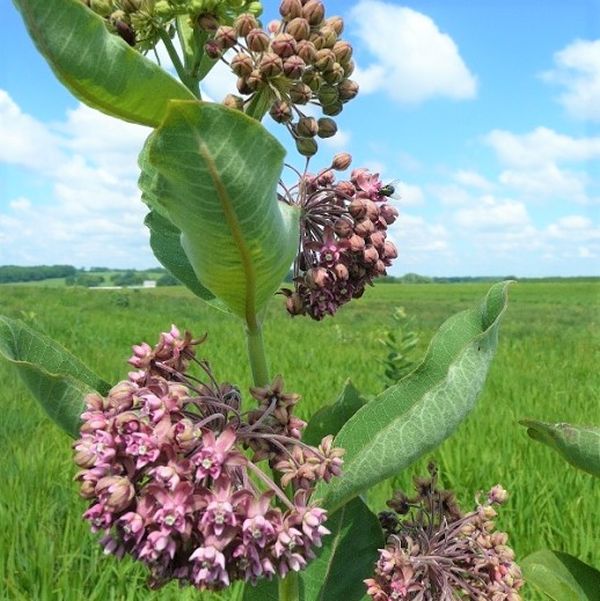Common Milkweed
Ascelpias syriaca
- Stay Protected with Plant Sentry ™
Common Milkweed - #1 Container is backordered and will ship as soon as it is back in stock.
Plant Sentry™
Plant Sentry™

Plant Sentry™ Protected
Your order is protected by our compliance system that:
- Prevents restricted plants from shipping to your state
- Ensures plants meet your state's agricultural requirements
- Protects gardens from invasive pests and diseases
Delivery and Shipping
Delivery and Shipping
Delivery and Shipping
Fast, Safe Plant Delivery
Ships in 3-4 business days • Tracking provided • Weather protected
| Under $50 | $9.99 |
| $50 - $99.99 | $14.99 |
| $100 - $149.99 | $16.99 |
| $150 - $198.99 | $24.99 |
| $199+ | FREE |
✓ Zone-specific timing • ✓ Professional packaging • ✓ Health guarantee
Understanding Plant Options
Nature Hills offers plants in two main formats:
- Container Plants: Grown in pots with soil, sized by container volume and plant age
- Bare Root Plants: Dormant plants without soil, sized by height measurements
Container Plant Sizes
Container sizes indicate plant age and growing capacity rather than liquid volume equivalents. Our containers follow industry-standard nursery "trade gallon" specifications, which differ from standard liquid gallon measurements.
Young Plants (6 months to 18 months old)
| Container Size | Actual Volume | Metric Equivalent |
|---|---|---|
| 2" x 2" x 3" | 0.18 - 0.21 dry quarts | 0.20 - 0.23 dry liters |
| 4" Container | 0.31 - 0.87 dry quarts | 0.35 - 0.96 dry liters |
| 4.5" Container | 0.65 dry quarts | 0.72 dry liters |
| 6" Container | 1.4 dry quarts | 1.59 dry liters |
| 1 Quart | 1 dry quart | 1.1 dry liters |
| 5.5" Container | 1.89 dry quarts | 2.08 dry liters |
Established Plants (18 months to 2.5 years old)
| Container Size | Actual Volume | Metric Equivalent |
|---|---|---|
| 2 Quart | 2 dry quarts | 2.2 dry liters |
| #1 Container | 2.26 - 3.73 dry quarts | 2.49 - 4.11 dry liters |
| 5" x 5" x 12" | 3.5 - 4.3 dry quarts | 3.85 - 4.74 dry liters |
Mature Plants (2-4 years old)
| Container Size | Actual Volume | Metric Equivalent |
|---|---|---|
| #2 Container | 1.19 - 1.76 dry gallons | 5.24 - 7.75 dry liters |
| #3 Container | 2.15 - 2.76 dry gallons | 8.14 - 12.16 dry liters |
Large Plants (3-5 years old)
| Container Size | Actual Volume | Metric Equivalent |
|---|---|---|
| #5 Container | 2.92 - 4.62 dry gallons | 12.86 - 20.35 dry liters |
| #6 Container | 5.25 - 6.01 dry gallons | 23.12 - 26.42 dry liters |
| #7 Container | 5.98 - 6.53 dry gallons | 26.34 - 28.76 dry liters |
Bare Root Plants
Bare root plants are sold by height from the root system to the top of the plant. Plants may exceed minimum height requirements.
Common Sizes:
- Trees: 1 foot, 2 feet, 3 feet, 4 feet, 5 feet, 6 feet
- Shrubs & Perennials: 1 foot, 18 inches, 2 feet
Important Notes
Container Volume Specifications
- Trade Gallon Standard: Our containers follow industry-standard "trade gallon" specifications established by the American National Standards Institute (ANSI Z60.1) for nursery stock
- Volume Variations: Actual soil volume may vary due to plant root systems and growing medium settlement
- Age Indicators: Container size primarily indicates plant age and maturity rather than liquid volume equivalents
Growing Conditions
- Plant size can vary based on variety and growing conditions
- Container size helps indicate plant maturity and establishment level
- Larger containers generally mean more established root systems and faster landscape establishment
Seasonal Availability
- Bare root plants are available seasonally when dormant
- Container plants are available throughout the growing season
- Specific varieties may have limited availability in certain sizes
Questions?
For questions about specific plant sizes or availability, please contact our plant experts who can help you choose the right size for your landscape needs.
Plant Highlights
Common Milkweed highlights at a glance!
-
Botanical Name
-
Brand
-
Growing Zones3, 4, 5, 6, 7, 8, 9
-
Growth RateModerate
-
Mature Height
-
Mature Width
-
Leaf Color
-
Flower Color
-
NativeYes
-
Pollinator FriendlyYes
-
Pollinator Required
-
Bloom PeriodEarly Summer, Late Summer
Characteristics
Where To Plant
When To Prune
- Early Spring
Water & Moisture Needs
- Moderate
Sunlight Needs
Soil Needs
- Adaptable to Most Soils

Growing Zones
The Monarch Host Wildflower Common Milkweed
- Native Plant to Support Monarch Caterpillars
- Larval Host Food
- Months of Nectar-Rich Flowers
- Fragrant Bloom Umbels are Purple-Pink and White
- Tall, Slim Growth Habit
- Elliptical Leaves are Eight Inches Long
- Unique Paisley-Shaped Pods
- Symmetrical Seeds Held on Silky Threads
- Critical Resource in Butterfly Gardens
- Widely Adaptable
- Tolerates Extreme Cold and High Heat
- Drought Tolerant Once Established
- Seldom Damaged by Deer
If you have a yen to help our amazing Monarch butterflies regain their population numbers...there is no better help than Common Milkweed (Ascelpias syriaca). Trust us, this isn't just another "weed".
Herbaceous Common Milkweed is absolutely critical to the healthy growth of these instantly recognizable black and orange butterflies. The eggs are laid on Common Milkweed plants to give caterpillars a ready food source.
This robust native plant acts as a clarion call for beneficial pollinators of all kinds, in fact. It creates showy colonies in naturalized plantings.
It's time to reimagine Common Milkweed as a valuable plant in the right landscape setting. A stand of these important native plants adds a showy, rough texture all season long.
The fragrant blooms are held in attractive spherical umbels composed of a hundred or more tiny true flowers. Intricate purple, pink and white blooms will be covered in butterflies and honey bees for several months each summer.
A strongly vertical main stem is softened with broad, thick leaves on either side. Light green on top, the underside is grayish-green with red veins.
Common Milkweed has been utilized to make fibrous cord, food, and even medicine through the years across the United States. But today, its value to Monarch butterflies makes it a staple for consideration.
The butterflies lay their eggs on the soft underside of these leaves, which contain natural cardiac glycosides or cardenolides. Nature's chemicals provide protection for the vulnerable caterpillars and make them distasteful to most predators.
Lack of habitat threatens the Monarch butterfly's migration paths. Tucking even a small planting dedicated to Common Milkweed in a sunny spot will really help boost their numbers.
Common Milkweed is native to North America and thrives in a wide array of conditions, including disturbed soil. It grows best in well-drained soil somewhere it can bask in the sun for hours.
Make a difference and leave a legacy by thoughtfully including native Common Milkweed. Order one or many more and turn some of your space into a beneficial Pollinator Garden!
How to Use Common Milkweed in the Landscape
On large lots, a generous swathe of native plantings create a magnificent feature in open, sunny areas. Mow wide walking paths through an exceptional prairie planting, where you'll appreciate the sight and fragrance of your Milkweed colonies dotted here and there.
Create a destination spot to enjoy picnics with family and friends. We are so proud to offer high-quality American wildflowers in our vast online catalog.
Even smaller gardens can help bring support for your local ecology. Although this species variety does grow vigorously, there is a way to use it on suburban lots.
Look for an area that receives lots of light each day to plan out your Butterfly Garden. Perhaps that is in your front yard or a forgotten side yard.
The key to using wildflowers in a "tame" environment is to pay attention to the finished edges. Invest in locally sourced quarry materials to edge your planned garden beds.
Once symmetrical planting beds are filled to bursting with vibrant flowering wildflowers, they become a dramatic study in contrasts. Install a formal frame around your wildly riotous blooming "living painting".
In urban areas, why not create an outdoor sign that explains the goals of your planting? Bolt a plasma-cut metal butterfly sculpture to a study column set in concrete for a long-lasting ornament that won't fly away.
Some funky neighborhoods are a little more free-form. There, add a wide curved bed that follows the lay of your land. Have fun recreating your local ecosystem in miniature and you'll spark plenty of conversation with your neighbors.
Don't forget to include cozy seating areas nearby. Keep binoculars in a weatherproof box, along with a special notebook to write down your daily sightings.
You can easily see why kids might get excited about this endeavor. Why not add a tall Tipi of annual runner beans nearby for a fun place for them to dream?
Victory Gardens and backyard orchards can realize a huge boost of productivity with Common Milkweed used nearby. Reclaim some space in your utility areas for these valuable host plants...such as behind the compost bins.
#ProPlantTips for Care
Give these native wild plants full sun so you can enjoy plenty of blooms and sturdy stems. Common Milkweed needs at least six hours of sunlight a day.
The soil type truly doesn't seem to matter to these exceptionally durable plants. In fact, this is an excellent choice to use on rough or disturbed ground in newly constructed areas.
Give a consistent schedule of water during the first season. Watch established plantings during extended drought and supplement with water as needed to protect your investments.
If you need to keep the colony in check, consider snipping the seed pods in the fall before they split open to release the fluffy seeds. They make wonderful dried arrangements and adorable wreaths.
In early spring, snip the dried stalks to an inch above ground level. Wait until spring, as the dried stalks provide winter shelter.
Yes, you may need to take up the mantle of educator by making this important choice. Become a proud ambassador for the beautiful Monarch Butterfly and order Common Milkweed from our native plant experts today!










